Anna Knox – 6 October, 2018
While I was thrilled to see Alneami and three of her contemporaries bringing Saudi Arabia to life in the City Gallery, the framework bothered me. I am suspicious of the way it risks simplifying Alneami's work into a story of (eastern) repression versus (western) freedoms and over-riding/writing the local and individual significance of the work. Put the meta-narrative of repression aside for a moment, and the work expands.
Wellington
Arwa Alneami
Never Never Land
Curated by Moya Lawson
11 August - 4 November 2018
Arwa Alneami’s Never Never Land, curated by Moya Lawson at Te Whare Toi in Wellington brings to life—perhaps for the first time in public in contemporary New Zealand—a more complicated image of Saudi women than the often sensationalised prisoner/princess stereotype circulated by global media.
Women were not yet permitted to drive in Saudi Arabia when Alneami created the video Bumper Cars, which sits at the centre of the exhibition. Here they are burkha-clad, bags and bling on show, phones in hand, goofing about then driving around. It’s an ironic commentary, but it’s also light-hearted. There’s a humorous moment just after the ride begins when a technical malfunction brings everything to a halt; it looks like the women won’t get to drive after all. I lived in Saudi Arabia for a while and at times it felt like any effort to do anything was brought to a stop by a technical or bureaucratic hitch, including the real bid to give women the right to drive. Happily, in this instance, the fault is repaired and the ride carries on.
The show is introduced in terms of Alneami’s defiance of her culture’s restrictions on female self-expression. This is a popular way to frame the stories and work of Saudi women that make it into the West. The well-known narrative of repression also corresponds almost inseparably in most New Zealand viewers’ minds with the image of the burkha which, naturally, dominates Alneami’s work. While I was thrilled to see Alneami and three of her contemporaries bringing Saudi Arabia to life in the City Gallery, the framework bothered me. I am suspicious of the way it risks simplifying Alneami’s work into a story of (eastern) repression versus (western) freedoms and over-riding/writing the local and individual significance of the work. Put the meta-narrative of repression aside for a moment, and the work expands. There is menace and sadness in these images; references to entrapment, infantilisation and the illusion of control. But there is also joy, recklessness, community, friendship, trust, liberation, humour and freedom. As well as social critique, this is a colourful and exuberant documentation of daily Saudi life.
The photograph of a sign dictating women’s behaviour in the theme park is a good example of how the narratives in which we are versed shape the way we experience the work. The sign is displayed on the wall outside the exhibition room. In translation, it forbids the lifting of the abaya and screaming during the rides. In Alneami’s documentation, the women do just that. A New Zealand viewer, accustomed to rules being generally followed, might conclude that the women are therefore acting defiantly and taking risks in doing so. But I would read this sign, and the behaviour, slightly differently. In my experience (admittedly only a singular one), it seemed that time and again in Saudi Arabia there were two or more systems of rule in place. Rules were often stated to satisfy decorum, but there was an implicit expectation that having been acknowledged officially, those rules would be-to some degree-bent in reality. The contradictions of this often drove me crazy, and to an outsider, I know it looks like hypocrisy. But against this understanding, the nuance of ignoring the rules shifts.
The exhibition is City Gallery’s contribution to Suffrage 125. On the one hand this invites us to consider the global and multifaceted efforts of the feminist cause. But it also implies a cultural superiority. Radio NZ began its coverage of the exhibition by commenting that: ‘While New Zealand gave women the vote in 1893, Saudi Arabia did so in 2015’. There’s a cultural self-righteousness to this statement that can’t be avoided—a pat-on-the-back, a hand-slap. The real problem here is one of apples and oranges; Saudi Arabia didn’t exist in 1893; ‘the vote’ in Saudi Arabia, a monarchy, is not the same as ‘the vote’ in New Zealand; many inhabitants of Saudi—women and men—still do not have full legal rights or status. A simple comparison of when women were granted the vote in each country glazes over these local and historical details, coercing Saudi’s suffrage story into an homogenised narrative that echoes the colonial perspectives we now distance ourselves from.
A country like Saudi Arabia, with a religious rule of law that privileges men and sometimes denies women basic rights, and that makes no acknowledgement of any gender between, is easy to feel culturally superior to. Which is why it’s important to look harder and take longer when considering Alneami’s work than with something that sits more easily; to be unsettled in an unexpected way, to interpret our interpretations critically, and then look again.
Anna Knox
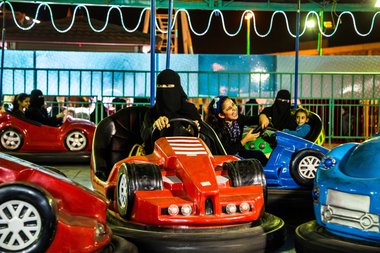
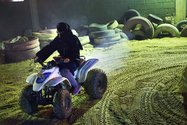


 Two Rooms presents a program of residencies and projects
Two Rooms presents a program of residencies and projects Advertising in this column
Advertising in this column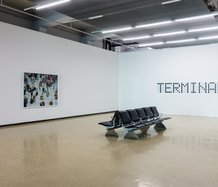
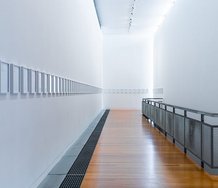
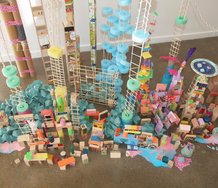
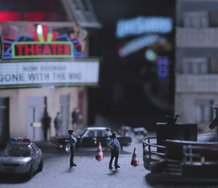
This Discussion has 0 comments.
Comment
Participate
Register to Participate.
Sign in
Sign in to an existing account.